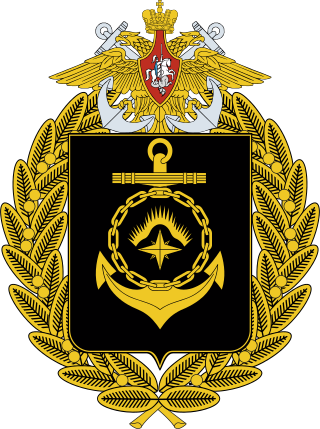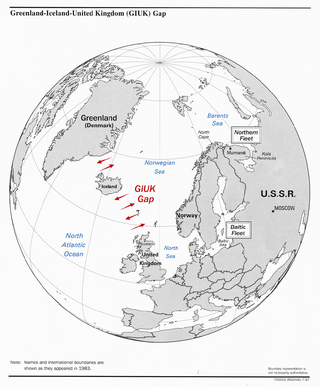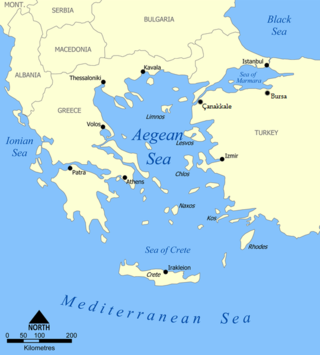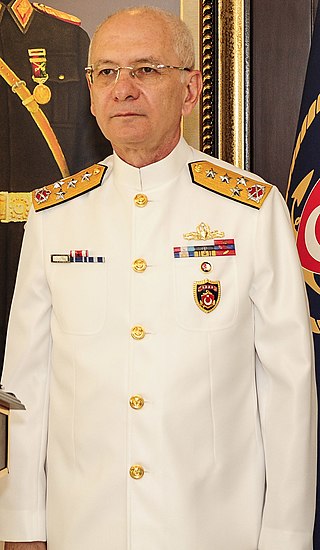
The Sixth Fleet is a numbered fleet of the United States Navy operating as part of United States Naval Forces Europe and Africa. The Sixth Fleet is headquartered at Naval Support Activity Naples, Italy. The officially stated mission of the Sixth Fleet in 2011 is that it "conducts the full range of Maritime Operations and Theater Security Cooperation missions, in concert with coalition, joint, interagency, and other parties, in order to advance security and stability in Europe and Africa." The current commander of the Sixth Fleet is Vice Admiral Jeffrey T. Anderson.

The Russian Navy is the naval arm of the Russian Armed Forces. It has existed in various forms since 1696. Its present iteration was formed in January 1992 when it succeeded the Navy of the Commonwealth of Independent States.

Admiral of the Fleet Michael Cecil Boyce, Baron Boyce, was a British Royal Navy officer who also sat as a crossbench member of the House of Lords until his death in November 2022.

The Turkish Naval Forces, or Turkish Navy, is the naval warfare service branch of the Turkish Armed Forces.

The Northern Fleet is the fleet of the Russian Navy in the Arctic.

The Black Sea Fleet is the fleet of the Russian Navy in the Black Sea, the Sea of Azov and the Mediterranean Sea. The Black Sea Fleet, along with other Russian ground and air forces on the Crimean Peninsula, are subordinate to the Southern Military District of the Russian Armed Forces. The fleet traces its history to its founding by Prince Potemkin on 13 May 1783 as part of the Imperial Russian Navy. The Russian SFSR inherited the fleet in 1918; with the founding of the Soviet Union in 1922, it became part of the Soviet Navy. Following the collapse of the Soviet Union in 1991, the Black Sea Fleet was partitioned between the Russian Federation and Ukraine in 1997, with Russia receiving title to 82% of the vessels.

The Ukrainian Navy is the maritime forces of Ukraine and one of the eight service branches of the Armed Forces of Ukraine.

The Baltic Fleet is the fleet of the Russian Navy in the Baltic Sea.

Naval Station Rota, also known as NAVSTA Rota, is a Spanish-U.S. naval base commanded by a Spanish rear admiral. Located in Rota in the Province of Cádiz, NAVSTA Rota is the largest American military community in Spain, housing U.S. Navy and U.S. Marine Corps personnel. There are also small U.S. Army and U.S. Air Force contingents on the base.

The Joint Force CommandNaples is a NATO military command based in Lago Patria, in the Metropolitan City of Naples, Italy. It was activated on 15 March 2004, after effectively redesigning its predecessor command, Allied Forces Southern Europe (AFSOUTH), originally formed in 1951. In NATO Military Command Structure terms, AFSOUTH was a "Major Subordinate Command". The commander of JFC Naples reports to the Supreme Allied Commander Europe at the Supreme Headquarters Allied Powers Europe, Casteau, Belgium.

The Bulgarian Navy is the navy of the Republic of Bulgaria and forms part of the Bulgarian Armed Forces.

The Royal Navy Submarine Service is one of the five fighting arms of the Royal Navy. It is sometimes known as the Silent Service, as submarines are generally required to operate undetected.

Exercise Strikeback aka Operation Strikeback was a major naval exercise of the North Atlantic Treaty Organization (NATO) that took place over a ten-day period in September 1957.

The Syrian Arab Navy was the naval branch of the Syrian Armed Forces. The main role of the Syrian Navy was to defend the country's coasts and ensure the security of the territorial waters of Syria. The Coastal Defense Forces and the Syrian Marines were attached to the Navy since the late 20th century. The Syrian Navy was relatively small, with only 4,000 sailors, in addition to 2,500 reservists and 1,500 marines, prior to the collapse of Ba'athist Syria in 2024. It was under the Syrian Army's Latakia regional command with its fleet based in the ports of Baniyas, Latakia, Minet el-Beida, and Tartus. It was the smallest part of the Syrian Arab Republic Armed Forces.

Exercise Grand Slam was an early major naval exercise of the newly formed North Atlantic Treaty Organization (NATO). This 1952 combined naval exercise took place in the Mediterranean Sea, and it included a naval force that was described as being "the largest armada to be assembled in that area since the end of World War II." Exercise Grand Slam was an early test for NATO's Allied Forces Southern Europe. With Exercise Longstep, this exercise served as the prototype for future NATO maritime exercises in the Mediterranean Sea during the Cold War.

The Pacific Fleet is the Russian Navy fleet in the Pacific Ocean. Established in 1731 as part of the Imperial Russian Navy, the fleet was known as the Okhotsk Military Flotilla (1731–1856) and Siberian Military Flotilla (1856–1918), formed to defend Russian interests in the Russian Far East region along the Pacific coast. In 1918 the fleet was inherited by the Russian Soviet Federative Socialist Republic, then the Soviet Union in 1922 as part of the Soviet Navy, being reformed several times before being disbanded in 1926. In 1932 it was re-established as the Pacific Fleet, and was known as the Red Banner Pacific Fleet after World War II as it had earned the Order of the Red Banner. In the Soviet years, the fleet was also responsible for the Soviet Navy's operations in the Indian Ocean and Arabian Sea. Following the collapse of the Soviet Union in 1991, the Red Banner Pacific Fleet was inherited by the Russian Federation as part of the Russian Navy and its current name was adopted.

Exercise Longstep was a ten-day NATO naval exercise held in the Mediterranean Sea during November 1952 under the overall command of Admiral Robert B. Carney, USN, the Commander-in-Chief Allied Forces Southern Europe (CINCAFSOUTH). This exercise involved over 170 warships and 700 aircraft, and it featured a large-scale amphibious assault along the western coast of Turkey. With Exercise Grand Slam, this exercise served as the prototype for future NATO maritime exercises in the Mediterranean Sea during the Cold War.

Emin Murat Bilgel is a Turkish admiral who served as 24th Commander of the Turkish Naval Forces.

Naval Striking and Support Forces NATO (STRIKFORNATO) is a naval command of Allied Command Operations of North Atlantic Treaty Organization (NATO). It is part of the NATO Force Structure. STRIKFORNATO is commanded by the Commander of the United States Sixth Fleet, and it is the only command capable of leading an expanded maritime task force. Its predecessor was Naval Striking and Support Forces Southern Europe (STRIKFORSOUTH); the name change took place in 2004.



















